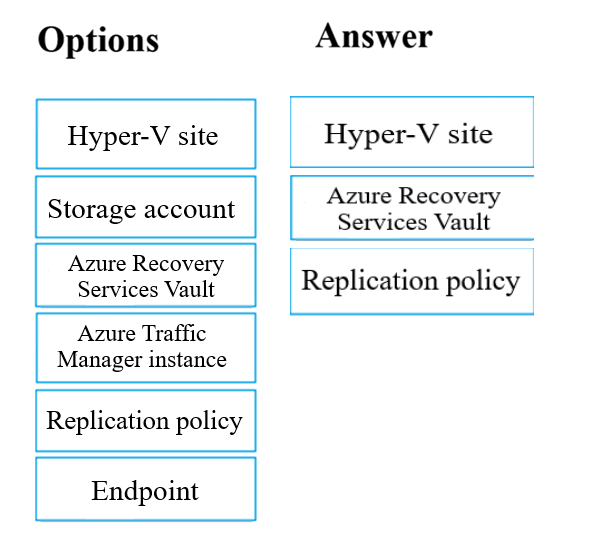

DRAG DROP -
Your company has an Azure subscription that includes a number of Azure virtual machines (VMs), which are all part of the same virtual network.
Your company also has an on-premises Hyper-V server that hosts a VM, named VM1, which must be replicated to Azure.
Which of the following objects that must be created to achieve this goal? Answer by dragging the correct option from the list to the answer area.
Select and Place:

weqr23wrefs
Highly Voted 3 years, 6 months agoregex33
4 months, 3 weeks agoExamPage
5 months, 2 weeks agogo4adil
1 year, 2 months agojackdryan
2 years, 2 months agoNarenderSingh
Highly Voted 3 years, 6 months agoBobbyMc3030
2 years, 2 months agodigitalcoder
Most Recent 2 months ago[Removed]
5 months, 3 weeks agoVinayak30
6 months, 2 weeks agobcristella
7 months, 1 week agoSivaPannier
7 months, 1 week agoAD_Dude
7 months, 1 week agotsummey
10 months, 1 week ago3c5adce
11 months, 3 weeks agotashakori
1 year, 1 month agohebbo777
1 year, 5 months agoareuzure
1 year, 7 months agodubliss
1 year, 7 months agobacana
1 year, 7 months agodhivyamohanbabu
1 year, 10 months agoExamPage
1 year, 10 months ago